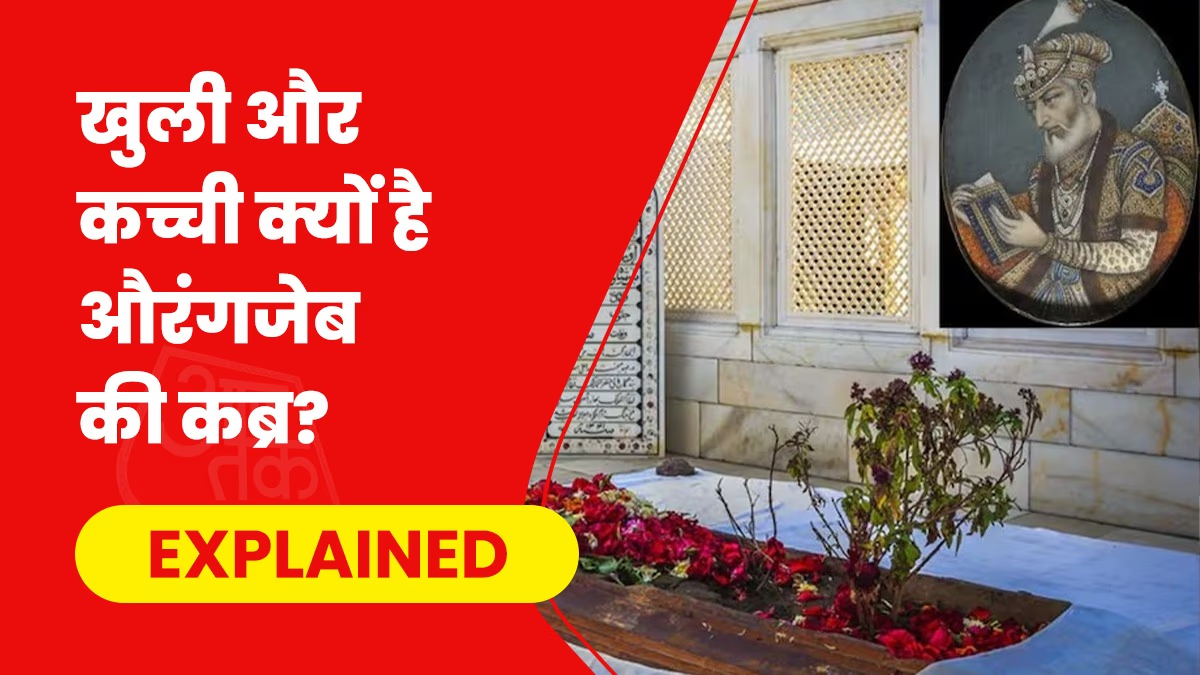It's been over a month since the release of the film Chava, yet the discussions it ignited have engulfed the public imagination. Alongside the Maratha king Chhatrapati Sambhaji Maharaj, the Mughal emperor Aurangzeb is drawing significant attention. The curiosity has shifted to questioning the necessity of his tomb.
Calls to remove or erase the tomb of this 350-year-old Mughal emperor continue to stir emotions, causing heated exchanges on both sides. With debates arising around his grave, let's explore Aurangzeb's burial site, its characteristics, and Islamic views on graves.
Where is Aurangzeb's Tomb Located?
Aurangzeb's tomb is in Khuldabad, near the city formerly known as Aurangabad, now Sambhaji Nagar. In the heart of the grave is a small green plant. Aurangzeb, in his will, instructed his son Azam Shah that upon his death, his temporary resting place should be in Khuldabad with a simple earthen grave draped only in a white cloth. Historian Khalid Ahmed highlights that early graves were plain earthen mounds adorned with plants and blooms.
Over time, many such graves have plants, while some shrines are surrounded by gardens. A small plant on Aurangzeb’s grave is regularly replaced to avoid damage. Afroze Ahmed, caretaker for six generations, shares that Aurangzeb's will requested his grave be made of simple earth in the compound of Sufi saint Hazrat Zainuddin Shirazi.
Aurangzeb’s Grave Gets Soaked During Rain
Aurangzeb insisted no dome or structure should cover his grave. His wish remains fulfilled as it stands open to the skies, soaking during monsoon. This simplicity symbolizes an egalitarian approach to burial.
Nizam Beautified the Grave at Lord Curzon's Suggestion
During British rule, Lord Curzon suggested to the Nizam that a great emperor's grave should not remain earthen. Consequently, the Nizam ordered white marble and paving, still admired today. Aurangzeb also insisted that rich fabrics not adorn his grave, staying true to his minimalist request for a plain white covering.
The Small Plant on Aurangzeb's Grave
Centrally placed on the grave is a one to one-and-a-half-foot tall plant, replaced every 2-3 months to protect the site. This speaks to the care and respect preserved for this historical figure.

Source: aajtak
What Should a Grave Be Like?
Graves mark life's final journey. Islamic teachings, outlined in Sharia, emphasize burial simplicity. Open graves allow nature to play a role, with sun and rain reaching the grave. Babur, like Aurangzeb, rests in simplicity under Afghan skies, in line with Islamic values of modesty.
Why Do Some Graves Have Grand Structures?
While open graves are preferred, enclosed ones aren't fully un-Islamic. Several Sufi saints' graves were enshrined to honor them, a shifting tradition among burial sites, evidenced by structures like Humayun’s Tomb in Delhi or the Taj Mahal in Agra, deviating from Islam's core simplicity.
Can graves be relocated? In Islamic terms, “Amaanati Dfan” permits temporary burial, later transferring to a permanent site, a common practice during Mughal times, exemplified by Babur, who moved from Agra to Kabul.

Source: aajtak
Simple Farewells Mark Final Rites
A mention of the Taj Mahal highlights Mumtaz Mahal’s temporary burial at Burhanpur before her final transfer to the Taj, aligning Islamic burial with simplicity.
Dr. Raziul Islam Nadwi emphasizes bare burials resonate with Islamic simplicity under Sharia, allowing grave land to eventually become reusable as nature claims it over time.
This reflects Islam's concept that life's afterimage fades as one becomes part of the earth. A bare grave echoes Islam’s ethos of humility.
Perceptions of Mausoleums
Mausoleums attract people believing the pious are closer to Allah, yet Islam’s core tenet of Tawhid discourages praying to anyone but Allah. Therefore, seeking aid at mausolea contradicts Islamic principles.




